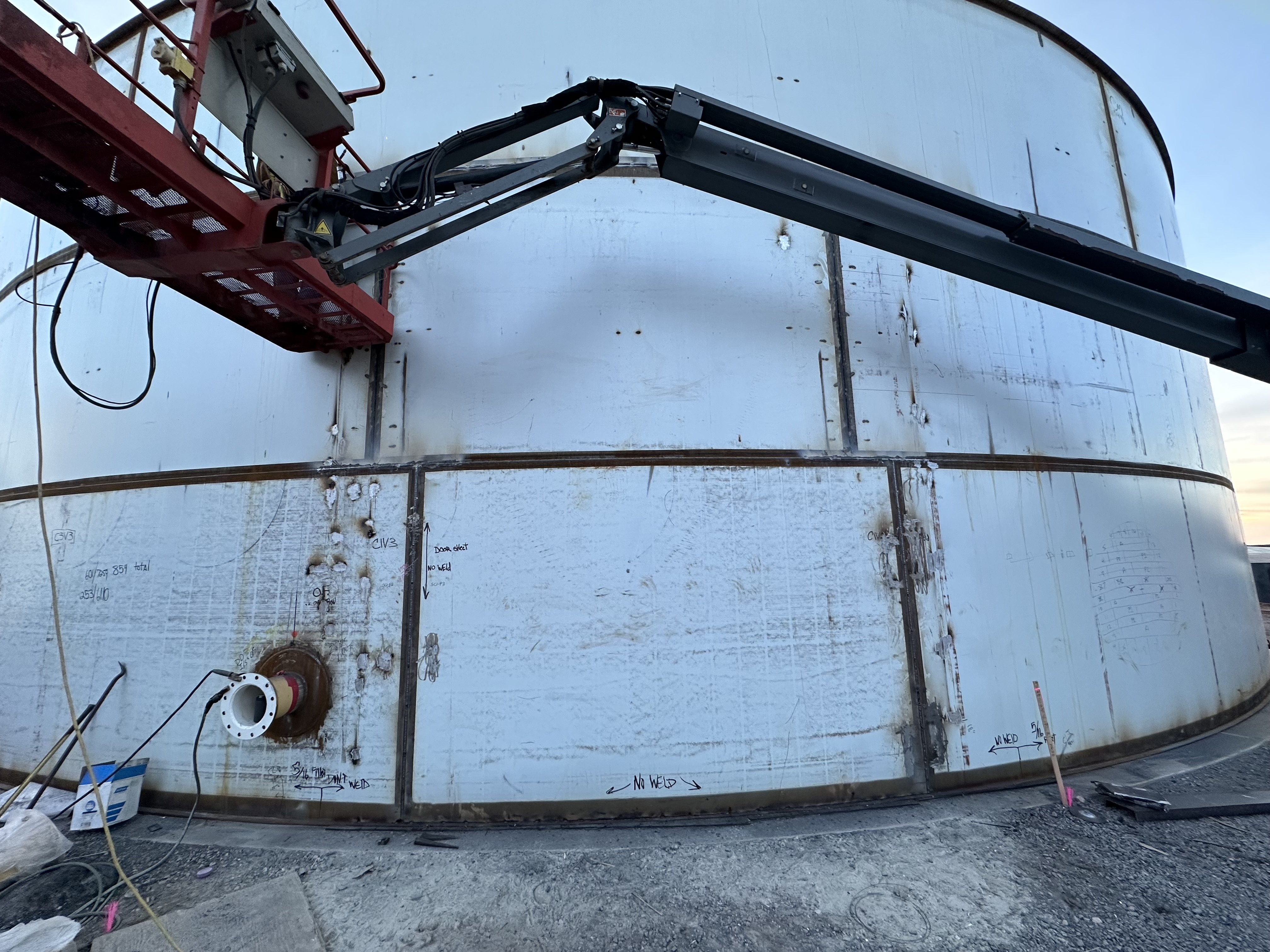Comprehensive Guide to Tank Welding Inspection for Security and Top quality
The Crucial Duty of Tank Welding Assessment in Ensuring Structural Integrity and Security Conformity in Industrial Applications
In the realm of industrial applications, tank welding assessment emerges as an essential component in guarding structural stability and making certain conformity with safety laws. Using a mix of strategies such as visual evaluations and progressed screening techniques, these examinations serve to determine and reduce prospective problems before they rise right into considerable hazards.
Importance of Storage Tank Welding Inspection

Ensuring compliance with industry requirements and guidelines is another considerable element of storage tank welding evaluation. Regulative bodies mandate strict guidelines for the building and upkeep of tank, and thorough assessments assist organizations abide by these needs. Non-compliance can cause extreme charges, including fines and shutdowns, additionally emphasizing the demand for rigorous inspection methods.
Additionally, storage tank welding assessment plays a crucial duty in preserving functional efficiency. Normal evaluations can recognize potential issues before they escalate, helping with timely repair work and decreasing downtime. This proactive approach not just boosts security yet likewise adds to cost savings in the future. In summary, the importance of tank welding assessment depends on its ability to guard public wellness, protect the setting, and guarantee compliance with regulatory frameworks.
Secret Examination Methods
Effective tank welding inspection counts on a variety of crucial strategies that make sure complete assessment of weld top quality and structural integrity. Among one of the most widespread strategies are visual evaluation, ultrasonic testing, radiographic testing, and magnetic bit testing - Tank Welding Inspection. Each approach supplies one-of-a-kind advantages in assessing different elements of the weld
Visual inspection functions as the very first line of protection, allowing inspectors to recognize surface problems, irregularities, or variances in the weld bead. Ultrasonic screening uses high-frequency audio waves to find inner defects, such as splits or gaps, supplying a thorough analysis of weld honesty. This approach is especially reliable in spotting concerns that might not be noticeable on the surface.
Radiographic testing uses X-rays or gamma rays to create pictures of the welds, exposing internal interruptions and offering a permanent record for future referral. This method is very reliable for essential applications where the threat of failing have to be decreased.
Lastly, magnetic bit screening is employed to identify surface area and near-surface defects in ferromagnetic products. By using magnetic areas and great iron fragments, inspectors can pinpoint gaps that may jeopardize the structural integrity of the tank. Together, these strategies develop a robust structure for ensuring high-grade welds in commercial applications.
Conformity With Safety And Security Standards

Normal inspections play a pivotal function in ensuring compliance by recognizing potential failings or deviations from suggested criteria. Inspectors are trained to evaluate weld quality, confirm product specs, and analyze the total structural stability of storage tanks. Their experience is crucial in guaranteeing that welding processes meet the required safety requirements.
Moreover, compliance with safety standards not only shields employees yet also safeguards the environment from prospective hazards such as leakages or tragic failings. Organizations that focus on safety and security compliance are better placed to mitigate threats, boost operational effectiveness, and cultivate a culture of security within their workforce. In recap, preserving strenuous conformity with security criteria is vital for the effective procedure of tank welding activities in commercial settings.
Benefits of Regular Examinations
Normal assessments best site are important to preserving the architectural integrity and security of welded tanks. These examinations supply a methodical method to identifying prospective issues or weaknesses in the welds, ensuring that any issues are attended to prior to they intensify right into substantial failures. By performing normal evaluations, organizations can spot deterioration, tiredness, and other forms of damage that may endanger container efficiency.
In addition, consistent examinations contribute to compliance with industry laws and standards. Following these guidelines not just alleviates lawful dangers yet likewise boosts the company's track record for safety and security and reliability. Regular examinations foster an aggressive security culture, motivating employees to identify and focus on the relevance of equipment stability.

Study and Real-World Applications
Situation studies and real-world applications illustrate the concrete influence of efficient tank welding inspection methods. Adhering to the application of strenuous welding inspection methods, consisting of aesthetic and ultrasonic testing, the center recognized important flaws in weld seams that could have led to tragic failings.
Similarly, a water therapy plant carried out a detailed inspection program for its container welding procedures - Tank Welding Inspection. By including non-destructive testing approaches, the plant had the ability to spot early indicators of corrosion and fatigue in weld joints. This prompt intervention expanded the life expectancy of the tanks and made certain conformity with security guidelines, hence securing public wellness
These instance researches highlight the significance of normal and methodical storage tank welding inspections. By focusing on these techniques, sectors can alleviate threats, enhance architectural stability, and ensure conformity with safety and security criteria, eventually causing Your Domain Name boosted operational efficiency and reduced obligations.

Final Thought
In final thought, storage tank welding inspection is a crucial element of maintaining structural stability and safety and security in industrial applications. Utilizing numerous inspection methods ensures early discovery of possible problems, thereby stopping tragic failures. Adherence to security requirements further improves functional integrity and conformity with governing needs. Inevitably, normal evaluations not just safeguard public health and wellness and the atmosphere however additionally add to the longevity and performance of crucial possessions, underscoring the crucial role of this practice in industrial operations.